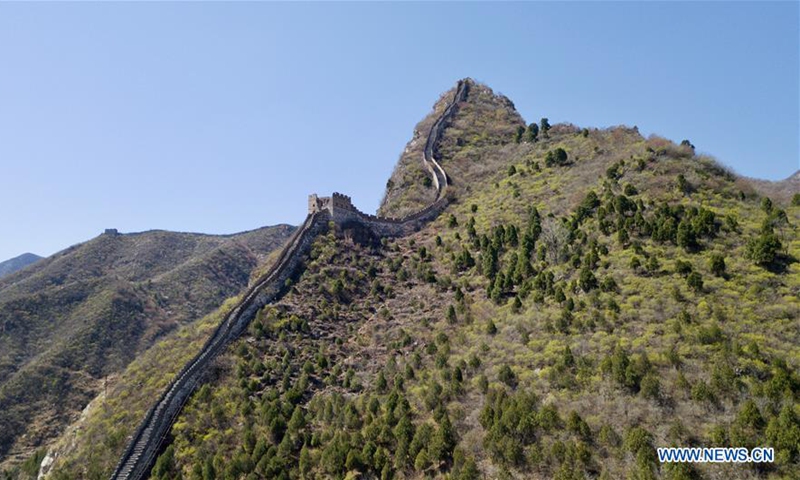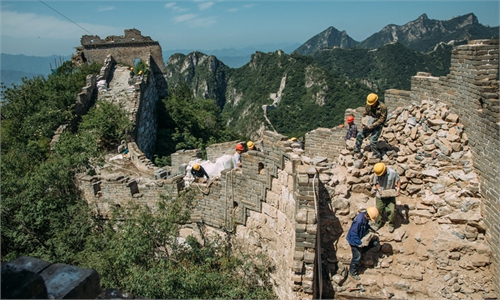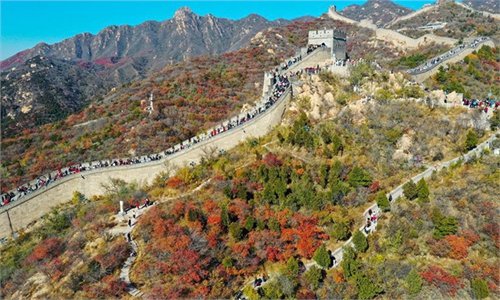
File aerial photo shows a view of the Great Wall. Photo: Xinhua
A digital restoration project for part of the Great Wall built in China's Han Dynasty (206BC-AD220) and Ming Dynasty (1,368-1,644) is scheduled to be completed by the end of 2021, making it the first part of the Great Wall to go digital, according to local officials on Tuesday.
Zhang Li, director general of the Cultural Relics Bureau in Shandan county, Northwest China's Gansu Province, told the Global Times on Tuesday that drones are re-shooting some key buildings of the ancient city of Xiakou and part of the Great Wall close to it, which will help to build a complete 3D model.
According to Zhang, due to some natural disasters including floods, freeze thawing and earthquakes, many parts of the Xiakou old town and the Great Wall have collapsed. "In order to support more archaeological surveying and conservation research, carrying out three-dimensional digital protection is urgently needed," said Zhang.
The Great Wall in Shandan county is currently the most complete section of the earth-built Great Wall in China. It has been listed as a national key cultural relic for protection and is known as the "outdoor Great Wall Museum of China."
"Digitalization not only allows the current situation of the Great Wall to be protected; it also meets the cultural needs of tourists," Zhang said and added that the local cultural authority will strengthen the construction of digital infrastructure, and build an official website and digital cloud platform of the Great Wall National Cultural Park to digitally display cultural relics and resources in China.
"In the future, people not only in China but also around the world can visit this masterpiece through digital exhibitions," said Zhang.
The ancient city of Xiakou in Shandan county covers an area of 190,000 square meters and can be traced back more than 600 years. As a subsidiary city of the Han Dynasty (206BC-AD220) and Ming Dynasty (1368-1644), it was close to the Great Wall and constitutes a strict military defense system. Historically, it has played a role in the functions of guarding borders, passing military information and supplying military rations.




